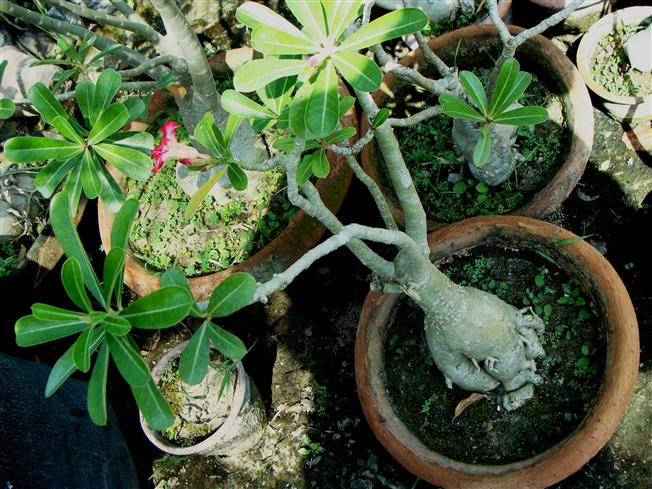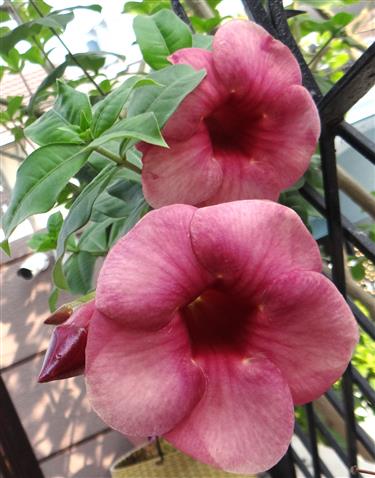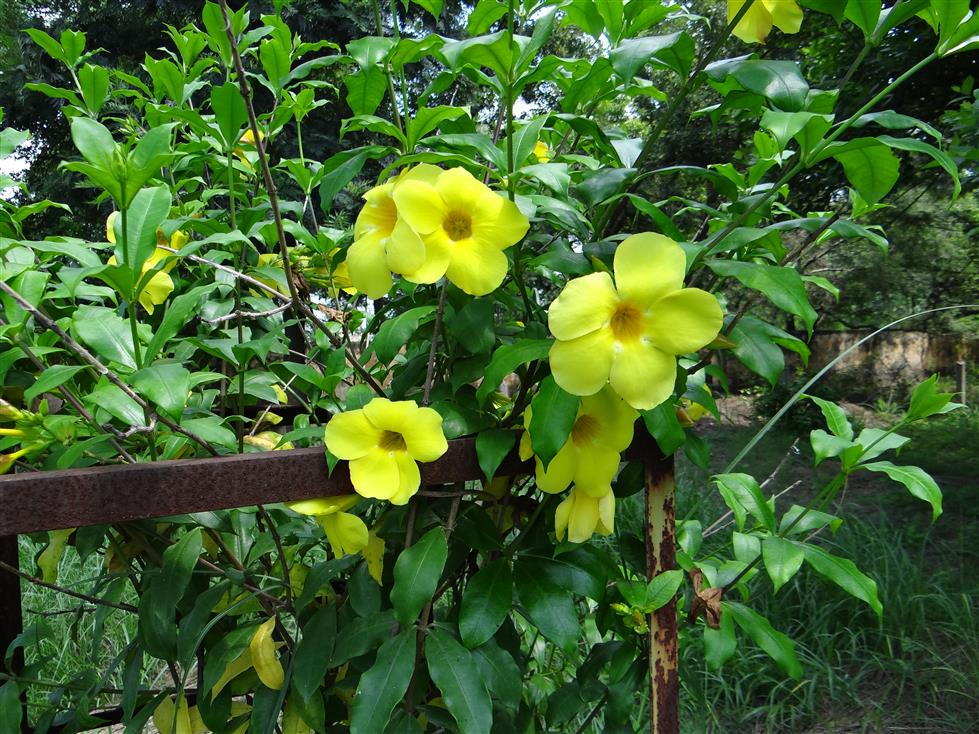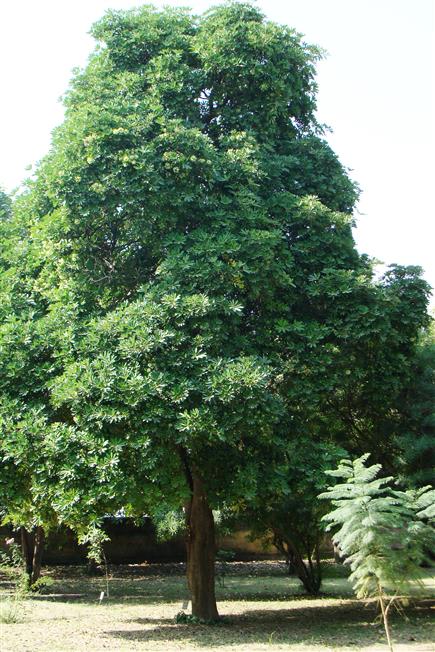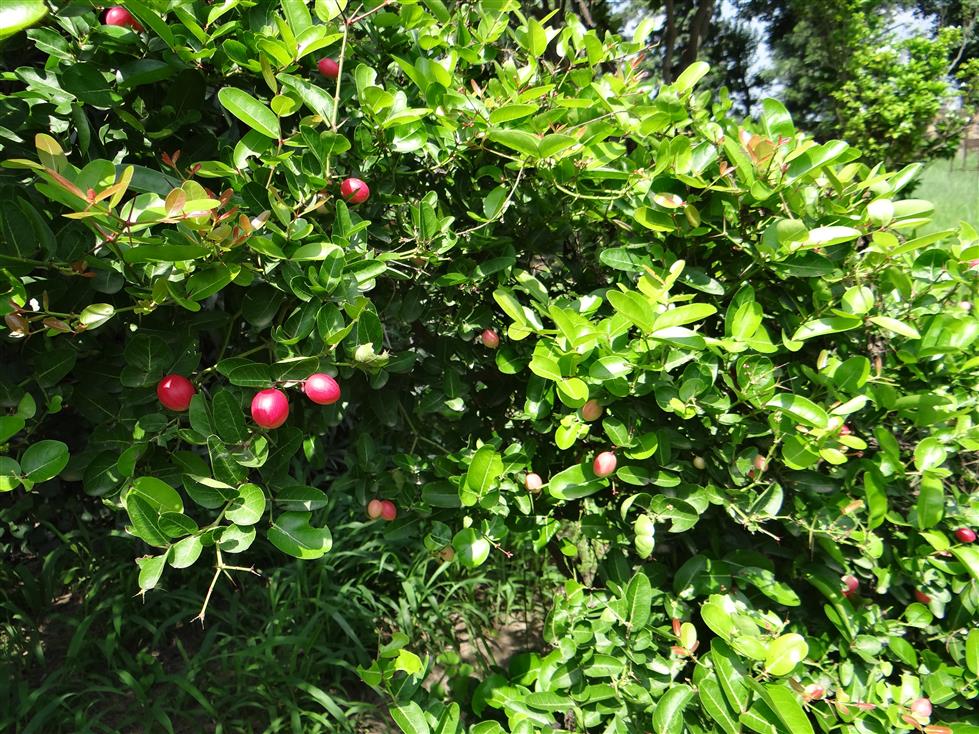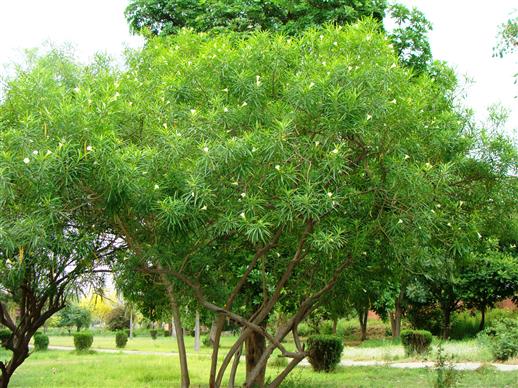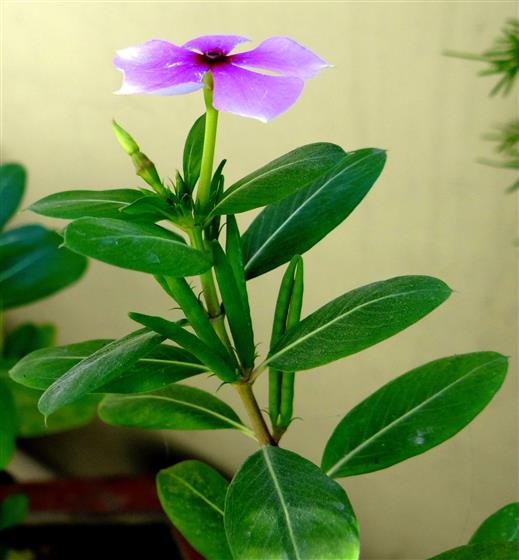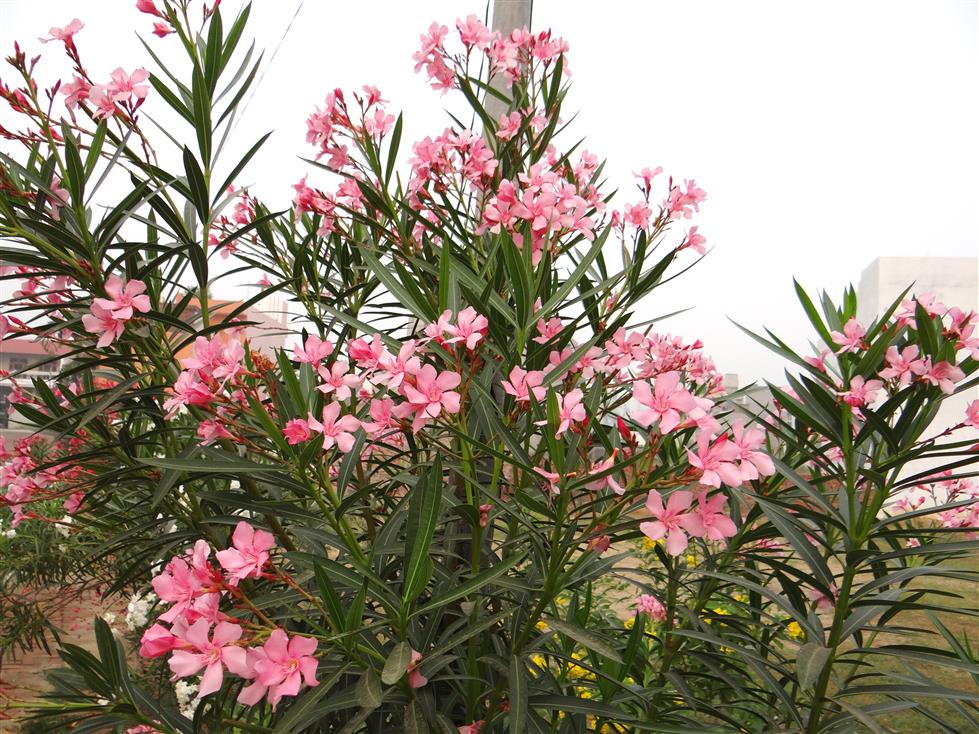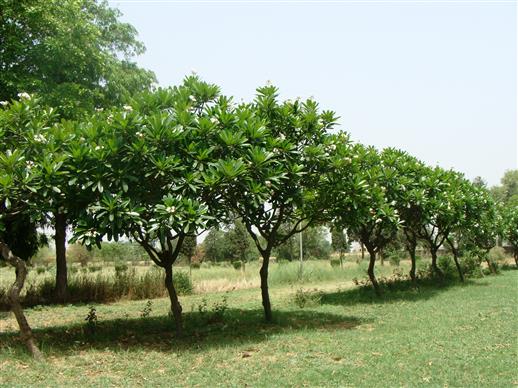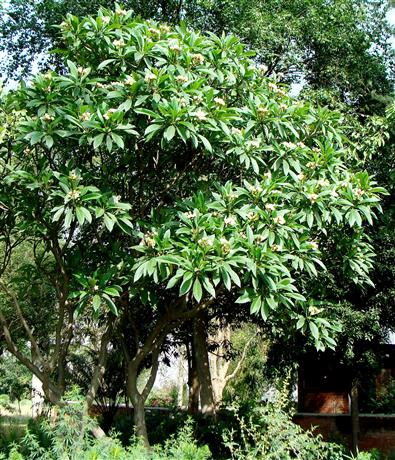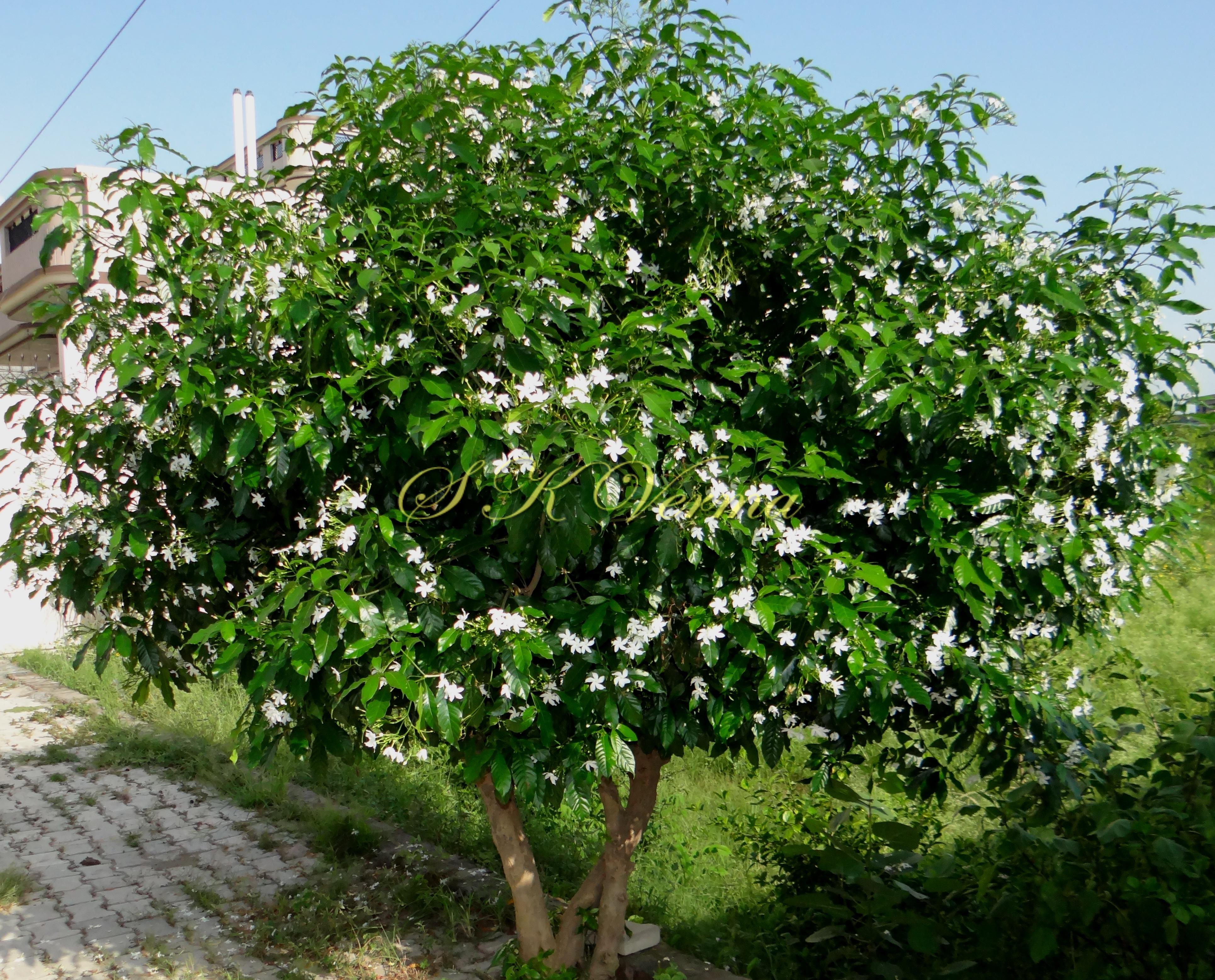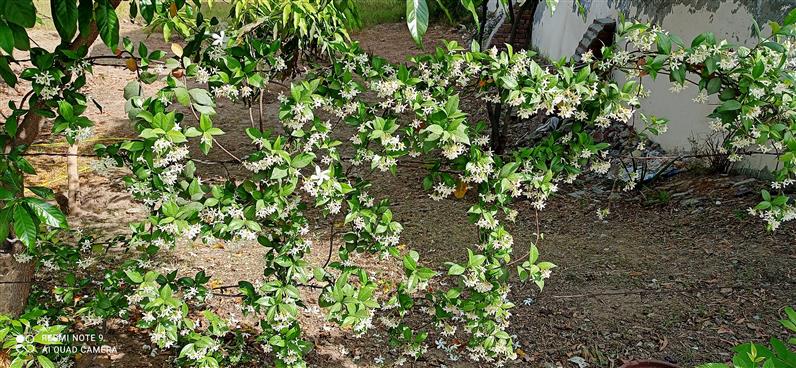APOCYNACEAE**
Trees or erect or trailing shrubs, rarely herbs, usually with milky juice. Leaves opposite, or whorled, sometimes alternate, entire, exstipulate, but the petiole often glandular in the axils. Flowers actinomorphic, bisexual, in terminal or axillary cymes. Calyx often glandular at the base inside, lobes 5 (or 4), imbricate. Corolla usually rotate, salver-shaped, funnelform or urceolate; lobes 5 (4), contorted, overlapping in right or left, rarely valvate. Stamens 5 (or 4), usually inserted in the corolla tube, anthers free or adhering to stigma by connectives; filaments very short or absent; pollens granular. Disc annular, cupulate or lobed or of glands or absent. Pistil 1, basically 2-carpellary, free or syncarpous, terminating into single stigma, ovary 1-locular, with 2 parietal placentas or 2-locular with axile placentas, ovules 2-many in each loculus, rarely solitary; stigma large (also called Pistil Head) and of various types: umbraculiform below and capitate or pentagonal above, with one or more usually 2-fid apiculus. Fruit a dry or fleshy drupe, berry or samara or of two drupes or berries or more usually of 2 free or connate follicles. Seeds various, often with a tuft of hairs.
About 155 genera and 2000 species
** Family Asclepiadaceae is not included in this family.
